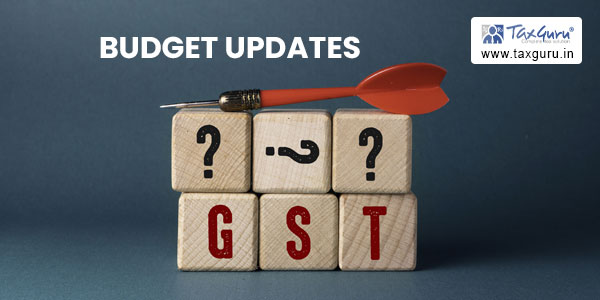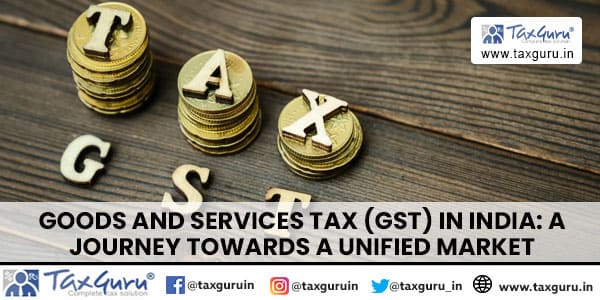The definition of Provident funds or PF varies widely from country to country, but in simple terms their purpose is to provide financial support to those who meet the retirement age (Currently the retirement age for PF is 58). The Government sets the age limits at which withdrawals from Provident Funds are allowed to begin, though some pre-retirement withdrawals are also be allowed but under special circumstances, such as for medical emergencies. Each provident funds sets its own minimum contribution level for workers and employers, which may vary depending on the worker’s age. Provident Funds also allow individuals to contribute extra to their provident fund accounts and allow employers to contribute extra for their employees. If an employee dies before receiving benefits, his/her surviving spouse and children may be able to receive survivors’ benefits from the provident fund.
Employees Provident Fund(EPF/PF) :
Employees Provident Fund (EPF/PF) is normally referred to as a retirement plan for employees. 12% of the basic wages, dearness allowance and retaining allowance, if any, payable to employees per month is deducted from employee’s salary and 12% is contributed by the employer. Employees may contribute higher percentage from their salary but there is no such obligation on the employer. The amount accumulated is disbursed at retirement or under Voluntary Retirement Scheme. It can be transferred in case of changing the employers. Employee or their family get pension after the age of 58. Employees are eligible for lifelong pension after the age of 58. They need not pay for this. The employer’s contribution will be used to pay the pension. They only need to complete 10 years of service. In case of changing of job, the PF account has to be transferred & not withdrawn. The legal heir or nominee is eligible for lifelong pension in case of death of the employee.
Different types of PF Forms for Employees
| Nature of Benefit | Claim Form | By whom to be submitted |
| Settlement of EPF account in case of Resignation/Retrenchment | Form 19 | Member |
| Settlement of EPF account of a deceased member | Form 20 | Nominee/Legal Heirs |
| Settlement of Employees’ Deposit Linked Insurance Fund | Form 5(IF) | Nominee/Legal Heirs |
| Settlement of Employees’ Pension Account | ||
| Withdrawal Benefit (in case of members with less than 10 years of membership) | Form 10-C | Member |
| Settlement of Lump sum Benefit of deceased member(who had no family and died when not in service in covered establishment) | Form 10-C | Nominee / Parent |
| Availing Scheme Certificate(in case of members with less than 10 years of membership and or not using above two options) | Form 10-C | Member |
| Availing Pension (all types) a)In case of membership of more than 10 years in EPS and attained the age of 50 for Reduced Pension and 58 for Superannuation Pension | Form 10-D | Member / / Nominee |
| b)Died in service/while holding Scheme Certificate and having a family | Form 10-D | Family Member |
| c)Died while in service and nominated any person other than the Family entitled for pension | Form 10-D | Nominee |
| Advances | ||
| Advances / Withdrawal (For all type of advances) | Form 31 | Member |
| Nomination Form | Form 2 (Revised) | Member |
Public Provident Fund (PPF) :
Another type of provident fund is Public Provident Fund (PPF). It is an investment plan for any individual. This is a voluntary scheme & can be opened from Post Offices or Nationalized Banks. The minimum annual investment in this is Rs. 500 & maximum investment Rs. 1,50,000.00 annually. The total amount accumulated during the tenure can be withdrawn after 15 years. It can also be extended by 5 more years & PPF holder can also make fresh deposits during this period. This is not a pension plan. So, there is no pension in these plans.
Benefits of Employee Provident Fund Scheme: This Scheme takes care of following needs of the employees:
- Retirement
- Medical Care
- Housing
- Family obligations
- Education of Children
- Financing of Insurance Policies
Other Important Points :
A) The rate of contribution is 10% in the case of following establishments:
1. Any covered establishment with less than 20 employees, for establishments cover prior to 22.9.97.
2. Any sick industrial company as defined in clause (O) of Sub-Section (1) of Section 3 of the Sick Industrial Companies (Special Provisions) Act, 1985 and which has been declared as such by the Board for Industrial and Financial Reconstruction.
3. Any establishment which has at the end of any financial year accumulated losses equal to or exceeding its entire net worth.
4. Any establishment engaged in manufacturing of (a) jute (b) Breed (d) coir and (e) Guar gum Industries/ Factories.
B) Interest Rate : The rate of interest for provident funds are fixed by the CG in consultation with the CBT every year during March/April. The interest is credited to the members account on monthly running balance with effect from the last day in each year. The rate of interest for the year 2013-14 is 8.75%.
C) A member of the provident fund can withdraw full amount at the credit in the fund on retirement from service after attaining the age of 58 year. Full amount in provident fund can also be withdraw by the member under the following circumstance:
1. A member who has not attained the age of 58 years at the time of termination of service.
2. A member who is retired on account of permanent and total disablement.
3. On migration from India for permanent settlement abroad or for taking employment abroad.
4. In the case of mass or individual retrenchment.
D) In the case of the following contingencies, the payment of provident fund be made after complementing a continuous period of not less than two months immediately preceding the date on which the application for withdrawal is made by the member:
1. Where employees of close establishment are transferred to other establishment, which is not covered under the Act:
2. Where a member is discharged and is given retrenchment compensation under the Industrial Dispute Act, 1947.
E) Withdrawals before retirement: Up-to 90% of the amount can be withdrawn after 54 years or within a year before the actual retirement, whichever is later.
F) Amount of Provident Fund balance of the deceased member is payable to nominees/ legal heirs.
G) Transfer of Provident Fund account: Provident fund can be transferred from one establishment to another, from Exempted Provident Fund Trust to Unexampled Fund in a region and vice-versa can be done as per Scheme.
H) Nomination: The member of Provident Fund shall make a declaration in Form 2, a nomination declaring the right to receive the amount that may stand to the credit in the fund in the event of his death. The member may furnish the particulars concerning himself and his family. These particulars furnished by the member of Provident Fund in Form 2 will help the Organization in the building up the data bank for use in event of death of the member.
Do’s and Dont’s of Members
Do’s for Members:
1) While joining an establishment, furnish details of previous employment if any, with previous Provident Fund a/c number and scheme certificate.
2) In case of existing Provident Fund/ Pension a/c, apply for transfer of previous a/c number to the present a/c number.
3) Ensure that employer furnishes Form-5 with details of previous Provident Fund a/c no. to Employees’ Provident Fund Organisation.
4) Execute Form-2, with details of self, nominee for Provident Fund and pension and details of family, so that it is forwarded to Employees’ Provident Fund Organisation by the employer.
5) Ensure that particulars furnished are correct in all respects.
6) Ensure that enrolment to Employees’ Provident Fund/ Employees’ Pension Scheme is done immediately on the date of joining the establishment.
7) Ensure that Provident Fund is deducted at statutory rate from the total wages i.e. basic, D.A. and retaining allowance if any.
8) If desirous of enhancing rate of contribution, inform your willingness with the higher rate opted and forward to Employees’ Provident Fund Organisation through employer and allow employer to deduct at enhanced rate from the wages.
9) If the wages drawn is more than Rs. 15000/-, intimate your willingness to contribute on the whole salary as per higher rate to Employees’ Provident Fund Organisation through employer. Employer can also contribute on the whole amount drawn as wages under intimation to Employees’ Provident Fund Organization.
10) Check up periodically with the employer that contribution and other charges are paid to Employees’ Provident Fund Organisation and ensure it’s correctness by verifying the Form-3A (contribution card) maintained by the employer.
Dont’s for a Member:
1) Don’t give false declaration and incorrect particulars to Employer and Employees Provident Fund Organisation.
2) Don’t fall victim to middleman/ agents. Please Contact PRO for Doubts / Clarifications if any.
3) Don’t allow Employer to deduct his own share of contribution or administrative charges payable by him from your wages.
4) Don’t be a party to mis-classification of allowances of your wages, with a view to avoid payment of Provident Fund.























What are the provision relating provident funds?
Dear sir
We are employer at Ahmedabad, we have recently registered ourselves for EPF registration through online process, now we want to register our employees under EPF scheme, please let us know how to register themselves under EPF scheme and to open up their account number under EPF
Please provide us link if any where we can get the information about it.
We are waiting for your valuable reply
Thanks & regards
Can I get new pf account number after leaving previous company
dear sir
if Joining salary is more than 15000 and employee opts for PF contribution should employer also contribute ??/
please explain
Dear Sir,
I am working with a National Sports Federation there where two civilian employees are working with. We propose to start Provident Fund for that two employees. One of the civilian employee is getting pay assistance from the Government on pay band 9300-4200 + DA and no other benefits is authorized to him. The second one is paid with Rs 9000/- pm by this Federation. Sir, can you justify:-
Are the entitled to enrol in the EPF Scheme ????
If not, does it have any provisions to start PF scheme under Federation Fund???
Waiting for your valuable reply sir
Dear Sir,
I am working with a National Sports Federation there where two civilian employees are working with. We propose to start Provident Fund for that two employees. One of the civilian employee is getting pay assistance from the Government on pay band 9300-4200 + DA and no other benefits is authorized to him. The second one is paid with Rs 9000/- pm by this Federation. Sir, can you justify :-
Are the entitled to enrol in the EPF Scheme ????
If not, does it have any provisions to start PF scheme under Federation Fund???
Waiting for your valuable reply sir
Sir my name is s.saraswathu but in my company payslip mentioned R.S.saraswathi i dont have any proof for this name the same name misteken reflect in my pf account still i am working with same company whts procedure to correct the spell mistek in my pf account pls help me
dear , u r not updated plz check your article